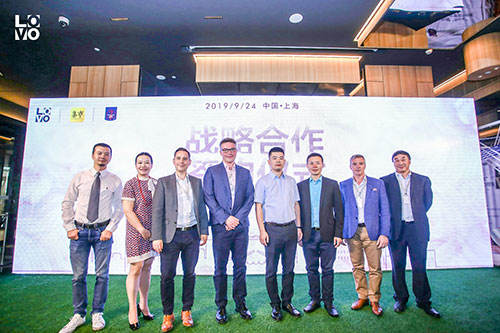FW
The Bangladesh Garment Manufacturers and Exporters Association (BGMEA) has refuted a report by US Senator Robert Menendez on alleging Bangladesh apparel factories of labor rights and safety violations. Submitted recently, the report titled ‘Seven Years after Rana Plaza, Significant Challenges Remain,’ expressed concerns about the welfare of workers in the garment industry.
The report says, over 1,100 Bangladeshis were killed and thousands injured when Rana Plaza caved in on April 23, 2013 in the nation's deadliest industrial incident. BGMEA has demanded further clarification on this as the sample size of the interview-based report seems over-generalised The association has called for more substantiated details about physical abuse and mistreatment of a worker named Shopna interviewed in the report.
The association also refuted allegation of harassment and low wage payment. It stated that the workers of Youngone are paid above the nationally set minimum wage of Tk 8,000.The Accord on Fire and Building Safety in Bangladesh receives regular phone calls from workers about occupational health and safety. It received 36 calls in 2019 and 2020.
On the complaint of termination of workers by 104 garment factories in December 2018, the association revealed that a committee was formed in May last year to assess the appropriateness of the number of terminated labourers and filed cases and to find justified solutions. Bangladesh amended the labour laws and increased the minimum wage for garment workers in 2018.
Hun Sen Cambodian Prime Minister Samdech Techo Hun Sen says China has arranged vessels to freight raw materials for garment and footwear production to Cambodia from now until May. Due to a shortage of raw materials from China caused by Covid-19, some factories in Cambodia had partially suspended operations, affecting almost 20,000 workers. The fast delivery of raw materials to Cambodia came after a delegation of the Chinese Ministry of Commerce visited Cambodia recently and met with Cambodian Minister of Industry and Handicraft Cham Prasidh.
He said during the meeting, Prasidh presented a list of necessary raw materials that Cambodia is facing a shortage for the garment and footwear industry. He added that the minister also initiated a "Green Lane" to facilitate and speed up shipments, logistics, and customs processing clearance, so the raw materials could be reached Cambodia faster.
American apparel imports in January 2020 fell 11.19 per cent in value and 10.72 per cent in volume. China’s apparel exports to the US fell 36 per cent. As China was the epicenter of the coronavirus, the country declared a lockdown in many provinces. This lockdown forced manufacturers to keep their factories closed. The New Year holidays also fell in January. Apparel shipments from Vietnam to the US increased 4.12 per cent. This decent growth coupled with China’s slump made Vietnam’s apparel exports to the US almost equivalent to that of China. Bangladesh’s apparel exports to the US jumped by 17 per cent. The growth is noteworthy for the country as it concluded 2019 with a stagnation in its exports to the US. India’s exports nosedived by 2.81 per cent. The biggest beneficiaries from Asia were Cambodia and Myanmar. Myanmar almost doubled its apparel exports to the US.
The impact of Coronavirus outbreak has been reflected in the US’ apparel imports in January 2020. The outbreak has severely impacted supply chains not just in China but in other major manufacturing hubs across the world as well. This is going to impact all manufactured goods as well as services.
Yarn prices have risen in Bangladesh as Coronavirus fear has triggered panic buying. Yarn prices had been showing an upward trend since last October due to higher demand from garment manufacturers. Prices of the widely-consumed 30-carded yarn have risen 11 per cent from a month ago. The industry fears losing competitiveness in international markets if yarn prices go up further since buyers will hesitate giving higher prices for garment products.
The supply chain of fabrics and other raw materials has been affected badly due to the outbreak. Bangladesh apparel makers source 46 per cent of their raw materials from China. Overall imports from China plummeted 21 per cent in January compared to last year, and plunged further to 37 per cent in the first week of February. The disaster assistance fund may be extended to factories/exporters to support unforeseen costs such as air freight, sourcing of raw materials and accessories from alternate and more expensive options to complete the orders and cost of financing for the extended period. Since goods from Chinese suppliers would be delayed, policy directives may be issued to the scheduled banks to amend the respective clauses in the back-to-back letters of credit to make the payments to suppliers conditional and justified.
Graham Clark, Director of Marketing, British Wool explains why global expansion will benefit UK wool producers
 British Wool is a farming co-operative. What value does this add for a producer?
British Wool is a farming co-operative. What value does this add for a producer?
Farming co-operatives provide strength in numbers, they’re about supporting the whole industry, at British Wool this means we take all types of wool from any producer no matter the size. We want to see our industry succeed in the long term, so it’s not just about pocketing a quick payment. We are relentlessly finding markets and new opportunities for every type of wool, no matter which part of the UK it comes from, or how much there is. Everything we do is designed to increase the payments for all wool producers, not just a few. We’re doing more to market British wool than any other organisation in the UK – our expansion into China is a good example of this.
How big is the wool market in China?
In a word, huge! China processes 70-80 per cent of all wool in the world. Around 55 per cent stays in China, used in products there, which also makes the Chinese consumer the largest consumer of wool products in the world. Historically most wool products manufactured in China were exported to the northern hemisphere so this is a real reflection of the huge increase in wealthy Chinese consumers. It’s also the major reason the Chinese market is so attractive to Western companies and brands like British Wool – consumers there love British heritage and provenance and we have the contacts, knowledge and expertise to exploit new opportunities, working with downstream partners to increase business.
in products there, which also makes the Chinese consumer the largest consumer of wool products in the world. Historically most wool products manufactured in China were exported to the northern hemisphere so this is a real reflection of the huge increase in wealthy Chinese consumers. It’s also the major reason the Chinese market is so attractive to Western companies and brands like British Wool – consumers there love British heritage and provenance and we have the contacts, knowledge and expertise to exploit new opportunities, working with downstream partners to increase business.
What is British Wool’s approach in China?
Our approach is to identify strategically attractive partners, building long-term relationships and supporting the development of unique British wool collections in their respective product categories. From there, we will work together and add value through our sales and marketing activities, including the creation of brand and marketing collateral, product expertise, social media exposure, promotions and many other activities as the business and product ranges evolve.
We launched our licensee scheme a year ago in China, this traces the origin of the wool through the various manufacturing processes right back to the wool merchants. This ensures we’re working with companies using high levels of British wool in their products.
Have there been any early successes?
We launched a British Wool bedding collection last September with a leading Chinese manufacturer and this range will be developed further moving into 2020 and beyond. We’re also working with one of the largest cloth manufacturers in the world on a unique British wool collection with a planned launch of Autumn/Winter 2020. There are several other opportunities in the pipeline, covering a range of different products.
What is the ultimate goal?
All our efforts are focused on maximising the returns we deliver to our producers for their wool. Finding new demand for British wool in China can only improve prices and therefore the returns for our registered producers.
 Around 5000 selected professional visitors, including 80% of decision makers – from 45 countries, are expected to attend the Interfiliere Shanghai 2020 show to be held in China which focuses on the lingerie industry. These include senior buyers, head of purchasing, head of design, product managers, export managers, sales & marketing managers, CEOs and managing directors.
Around 5000 selected professional visitors, including 80% of decision makers – from 45 countries, are expected to attend the Interfiliere Shanghai 2020 show to be held in China which focuses on the lingerie industry. These include senior buyers, head of purchasing, head of design, product managers, export managers, sales & marketing managers, CEOs and managing directors.
"The newly rebranded Intertextile Shenzhen Apparel Fabrics (formerly Intertextile Pavilion Shenzhen) will take place from July 15 to 17, at a brand new venue – the Shenzhen World Exhibition and Convention Center. Over 2,000 exhibitors are expected to join in a space spread over 60,000 sq. mt (2019: 1,065 exhibitors). Held concurrently with the first Shenzhen edition of Yarn Expo, as well as CHIC and PH Value, the fair offers a comprehensive, convenient platform for sourcing between seasons in South China."
 The newly rebranded Intertextile Shenzhen Apparel Fabrics (formerly Intertextile Pavilion Shenzhen) will take place from July 15 to 17, at a brand new venue – the Shenzhen World Exhibition and Convention Center. Over 2,000 exhibitors are expected to join in a space spread over 60,000 sq. mt (2019: 1,065 exhibitors). Held concurrently with the first Shenzhen edition of Yarn Expo, as well as CHIC and PH Value, the fair offers a comprehensive, convenient platform for sourcing between seasons in South China.
The newly rebranded Intertextile Shenzhen Apparel Fabrics (formerly Intertextile Pavilion Shenzhen) will take place from July 15 to 17, at a brand new venue – the Shenzhen World Exhibition and Convention Center. Over 2,000 exhibitors are expected to join in a space spread over 60,000 sq. mt (2019: 1,065 exhibitors). Held concurrently with the first Shenzhen edition of Yarn Expo, as well as CHIC and PH Value, the fair offers a comprehensive, convenient platform for sourcing between seasons in South China.
Wendy Wen, Senior General Manager of Messe Frankfurt (HK) says, “Intertextile Shenzhen has long offered an access point to key garment manufacturers, from South China to Southeast Asia and beyond. The move to a new venue means the fair has room to grow even more, in a convenient location. And following the successful model of Intertextile Shanghai with three concurrent fairs, the July date makes this the ideal fair for trade buyers who need a one-stop shop for apparel sourcing between seasons.”
Shenzhen, world’s garment production centre
Shenzhen is a key city in China’s Greater Bay Area, a central government scheme to develop an integrated economic hub by linking nine major cities of South China’s Guangdong Province, Hong Kong and Macau. The Greater Bay Area includes major garment manufacturing hubs for all kinds of garment clusters, including ladieswear, menswear, kids wear, denim, wool and underwear.
economic hub by linking nine major cities of South China’s Guangdong Province, Hong Kong and Macau. The Greater Bay Area includes major garment manufacturing hubs for all kinds of garment clusters, including ladieswear, menswear, kids wear, denim, wool and underwear.
The new venue is located near the Shenzhen Bao’an International Airport, while the area is also well connected via high speed trains and the world’s third largest ferry port, ensuring convenience for local manufacturers as well as international buying offices from Hong Kong. The fair is also an ideal location for garment producers from countries in the ASEAN region, such as Vietnam, Thailand, Indonesia, the Philippines, Malaysia and Cambodia.
A world-class fashion destination
The venue is close to Dalang Fashion Town in Shenzhen, an ongoing development subsidised by the government that aims to use the momentum of the Greater Bay Area to build an international fashion centre. The development builds on top of Shenzhen’s strong foundations in fashion, with the city already being a well-known ladieswear hub, home to around 30,000 fashion designers and over 2,000 fashion retailers.
Aiming to specialise in technology, design and sustainability, Dalang Fashion Town is part of China’s efforts to continue to expand its textile industry from not only manufacturing, but also to design and trendsetting. The area is home to around 500 domestic fashion enterprises.
Fair meets year-round demand of the fashion industry
Fast fashion and sustainability rarely meet in the middle however, both concepts are key drivers towards smaller batch sizes and on-demand replenishment. Market needs now constantly adapt to fast fashion trends outside of traditional Spring and Autumn collections, while at the other end of the spectrum, demand for sustainability is predicted to continue to grow in the 2020s, as public awareness of overproduction issues in the fashion industry rises.
Intertextile Shenzhen’s mid-summer date makes it an ideal event for trade buyers to replenish stocks between seasons, while many exhibitors also offer product-in-stock services for faster processing. Smaller batch orders are also welcomed by many exhibitors at the fair, encouraging the industry to reduce waste through over-production.
Intertextile Shenzhen Apparel Fabrics will be held from July 15to 17, 2020. The organizers are: Messe Frankfurt (HK) Ltd; the Sub-Council of Textile Industry (CCPIT) and the China Textile Information Centre.
 Jersey Lomellina is launching ‘Hole in one’, a new advertising campaign dedicated to the world of performance fabrics for sportswear. Customers will then be planning various versions of the campaign worldwide.
Jersey Lomellina is launching ‘Hole in one’, a new advertising campaign dedicated to the world of performance fabrics for sportswear. Customers will then be planning various versions of the campaign worldwide.
The campaign by Jersey Lomellina, and international leader in the production of stretch circular knitted fabrics and consolidated symbol of 100 per cent Made in Italy quality in the world, is dedicated to golf. It is a milestone for the company which, for the first time in its history, moves from women’s wear to a more high performance, dynamic, high-tech, modern and elegant menswear.
For the first time ever Jersey Lomellina has collaborated with an illustrator to bring the campaign to life: Jacopo Camagni, an artist whose style hints at the American and European school but with some Japanese influences, has introduced some elements of the Manga world to get closer to the Far East in the campaign. A new hybrid image was born, an innovative and unique crossover.
Lomellina has chosen the world of comics also because it is in line with the recent eco-friendly trend: in addition to allowing countless creative possibilities, illustration does not need people to move and does not require the use of high environmental impact instruments like photo shooting sets.
Euratex welcomes the proposed new EU industrial strategy but wonders how the proposed principles will be put into practice; reality checks and close monitoring of the implementation of the strategy will be essential to make a positive and sustainable impact.
The European textiles and apparel industry, worth nearly €180 bln and including 171,000 companies, is an essential pillar of the European industry. It is a very globalised industry with extensive value chains across different continents. Over the last 10 years, real changes have been made to innovate and increase sustainability of its products, starting from traditional clothing to smart and medical textiles, industrial applications in the automotive and aerospace industry, to protective wear and high-end fashion.
Against this background, Euratex welcomes the launch of a new comprehensive EU industrial strategy. It is high time for Europe to embrace its industry again, as a source of welfare, innovation and employment. The proposed strategy is rightfully putting emphasis on economic sovereignty, without falling into the trap of protectionism.
The strategy should include some important elements, essential for its success:
• Any proposed measure must be assessed in a global context, i.e. European companies cannot be subject to new rules, standards or regulations unless all players do play with the same rules. Measures to ensure a level playing field must be realistic and effective.
• Innovation into a more sustainable industry has an important cost, and the end consumer is not always willing to pick up that cost. This may jeopardize the financial sustainability of our industry, especially for smaller companies. Accompanying measures should be taken to alleviate the burden of green investments, especially for SMEs.
• Labour force shortage is an important barrier to the development of our industry. In 2018, 34% of the Textile and Clothing workforce was over the age of 50 (a steep increase from the 22% just 10 years ago). It is therefore urgent to make a common effort to both upskill and reskill the current workforce and to attract young talent.
While the principles mentioned in the strategy are sound, effective implementation of such principles into practical measures will be critical. Too often in the past, the EU has presented ambitious plans, but failed to deliver on their implementation, either by lack of resources or political will from member states. Euratex therefore calls for a strict “governance” of this new strategy, introducing measurable targets, which can be monitored by relevant stakeholders. “We should be vigilant that proposed measures are realistic and effective, and actually support industrial competitiveness, rather than adding a regulatory or financial burden”, commented Director General Dirk Vantyghem on the proposed strategy.
Euratex stands ready to contribute to a positive and effective implementation of the strategy, making sure the European economy can regain its competitiveness, create jobs and welfare.
As the voice of the European textile and clothing industry, Euratex works to achieve a favourable environment within the European Union for design, development, manufacture and marketing of textile and clothing products.
The EU textile and clothing industry, with over € 50 billion of exports, is a global player successfully commercializing high added value products on growing markets around the world.
Working together with EU institutions and other European and international stakeholders, Euratex focuses on clear priorities: an ambitious industrial policy, effective research, innovation and skills development, free and fair trade, and sustainable supply chains.
Stephan Trubrich assumed the new role as Vice President Capital Markets, effective as at March 01, 2020. In his capacity, Trubrich will oversee the Lenzing Group’s capital markets activities, including Investor Relations and ESG (Environmental, Social & Governance) Reporting. He will report directly to Stefan Doboczky, Chief Executive Officer of the Lenzing Group. Stephan Trubrich has more than 9 years of experience in the field of equity research with Kepler Cheuvreux, UniCredit and Deutsche Bank. For many years, he has been Austria’s top ranked equity analyst. Trubrich holds a Master’s Degree in Science in Accounting and Finance from Aston Business School, UK. He is also a CFA Charterholder. Stephanie Kniep, Head of Investor Relations, will leave Lenzing, effective as of April 30, 2020 to pursue new endeavors.












